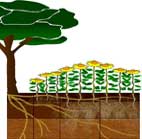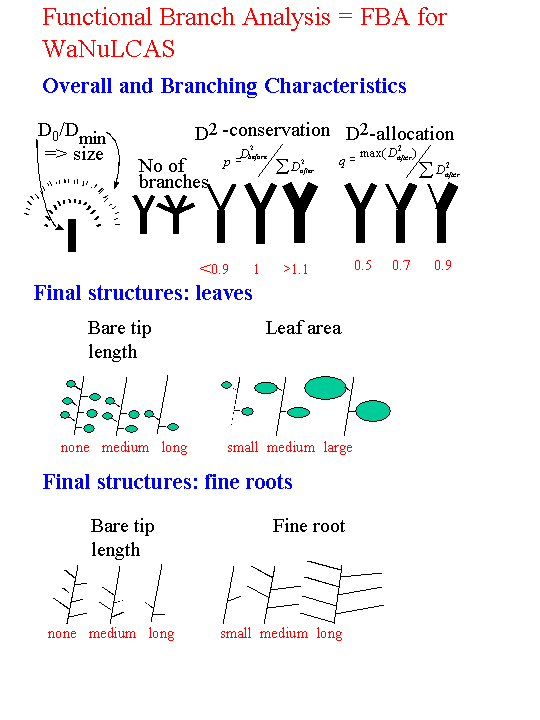

Functional Branch Analysis
The Functional Branch Analysis (FBA) scheme derives the basic rules for reconstructing trees. The underlying fractal (or self-repeating) branching models are essentially based on assumptions of ‘self-similarity’ across scales: this means that a picture of a branching point looks the same, whether it is taken from the first or last branching point of a tree, relative to the diameter of the branches. Fractal branching models provide a transparent scheme for deriving tree-specific scaling rules on the basis of easily observable, non-destructive methods. Aboveground this means that we can use stem diameter (DBH) to predict the size of the tree (biomass of stem, branches and leaves; cumulative litterfall). Belowground we can use proximal root diameters to predict root biomass and root length.
We
have developed a tool to visualize branching patterns generated or collected
using FBA rules. Check this out.

References:
Spek, L Y and Van Noordwijk, M., 1994. Proximal root diameters as predictors of total root system size for fractal branching models. II. Numerical model. Plant and Soil 164: 119-128
Van Noordwijk, M., Spek L.Y. and De Willigen, P., 1994. Proximal root diameters as predictors of total root system size for fractal branching models. I. Theory. Plant and Soil 164: 107-118
Van Noordwijk, M. and Purnomosidhi, P., 1995. Root architecture in relation to tree-soil-crop interactions and shoot pruning in agroforestry. Agroforestry Systems 30: 161-173
Van Noordwijk, M. and Mulia, R., 2001. Functional branch analysis as tool for fractal scaling above- and belowground trees for their additive and non-additive properties. Ecological Modeling (in press)